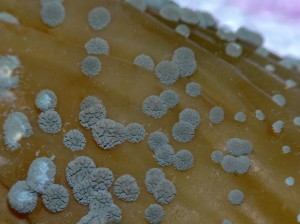Perfume for poop
I never realized how important it is to have a good perfume for poop.
We really take a lot of things for granted living in a first world country and one of them is proper sanitation. A lot of places lack proper plumbing and instead use latrines or outdoor toilets. That’s not as much fun as it sounds like because sometimes the stench in these latrines becomes so great the people stop using them and just go outside. When that happens the groundwater can become contaminated which leads to the spread of all sorts of illnesses. This is not a trivial problem – it affects about 2.5 billion people across the world.
And that’s where cosmetic science comes in.
Scientists at Firmenich, which is one of the largest fragrance companies in the world, are working in India, Kenya, and south Africa to help solve this problem by analyzing the scent of these outdoor toilets. They’re using a technique called “headspace analysis” where they basically measure what’s in the gas with in the room. That’s also funny because in the Navy toilets are called “the head.”
They chemically analyze the odors in the latrine to determine which are the most offending components which “the scientists then confirm by smelling.” How would you like to have that job?
Once the fragrance chemists understand the exact nature of the odorants they can create scents that counteract the bad smells. If they can do that and encourage more people to use the latrines it can lead to an overall improvement in sanitary conditions which is good for everybody. Better living through cosmetic chemistry!
(Maybe they could try shipping them a couple of million cases of Poo Pourri.)
Are consumers tired of beauty ads?
Are Twizzlers good for your teeth?
Scientists from the University of Edinburgh have discovered that trans-chalcone, which is related to licorice root, has the ability to inhibit growth of the bacteria that contributes to tooth decay (Streptococcus mutans.) It works by inhibiting the enzyme that the bacteria need to thrive.
Now that doesn’t mean you can throw out your fluoride toothpaste and just chow down on a pack of Twizzlers. You also can’t just gnaw on a piece of licorice root. Why not? Because even thought it’s natural, the compound does need to be standardized. And that’s one of the big problems using natural ingredients – the concentration and the quality can vary tremendously from root to root (in this case.)
But if the material is purified and quantified it’s possible it could be used in an anti-cavity chewing gum. And in fact the Wrigley Company, which is right here in Chicago, sponsored some of this research.
Will robots replace cosmetic formulators?
The perils of preservative free
We’ve given a couple examples in previous shows where preservative free cosmetics have been recalled due to microbial contamination. It’s important to keep in mind that this is a danger not only in cosmetics but also in foods. And here’s a recent news story about a children’s brand of preservative free juice in which the mother discovered mold.
The brand in question is Good2Grow children’s juice and according to the story the mother ”opened the juice … stuck my finger in there and pulled it out and there was gooey stuff all over” When she complained to the company, their response was…
“The only way to virtually eliminate the risk of mold would be by adding preservatives to the millions of bottles kids consume every year – and we strongly believe that would be the wrong thing to do for our children.”
Maybe the problem here is the way these products are marketed. People have mistakenly gotten the sense that preservatives are bad so saying a product is “preservative free” sounds like a good thing even though it’s not. So I brainstormed a couple of other marketing terms that could be used in place of preservative free.
- Instead of saying “preservative free” on the label you could say the product is “Pro-Pathogen.”
- Now With More Microbes!
- Spoiler Alert! (Get it?)
- And finally there’s the more long-winded legal version: “Caution: using this unpreserved product could lead to skin infections and other illness.”
You’re never to old for sunscreen
Is cyclomethicone safe?
One of the basic principles of the Beauty Brains is that we make evidenced-based recommendations about beauty products. And that means as new evidence becomes available sometimes we may have to revise our recommendations. For example, look at the data for the volatile silicone known as cyclopentasiloxane or cyclomethicone.
I don’t recall if we talked about this on the show but we certainly have blogged about it in the past. Cyclomethicone is a very common ingredient used in hair and skin care products. It’s primarily used as kind of a carrier for other ingredients as well as for its a slip enhancing properties. It also evaporates which means it can spread stuff on your skin or hair and then it’s gone without leaving a greasy residue.
Well according to the research published in the EU, cylomethicone may present some risks to health when used at high levels. What’s most interesting about this though is the reason they flagged the safety of the ingredient. Here’s how this works.
They determine what the margin of safety is. Remember this idea of the dose making the poison? Well if you’re only likely to be exposed to an ingredient that will be below this margin of safety then it’s unlikely there will be any ill health effects. But if the exposure is above the margin of safety then that raises some questions. So they surveyed the manufactures of products with cyclomethicone and found that in a couple of cases the percentage of this ingredient in the formula is 90% or greater. Specifically that was a case for hair shine sprays (which makes sense – like Argan oil) and surprisingly, some body lotion products which surprises me.
The concern in this case was that the product might be accidentally ingested (I suppose by children). There’s also concern about inhaling such a high-dose of the material (from a spray on product.) So, the Scientific Committee on Consumer Safety (SCCS) recommends that the EU is restrict its use.
So the point is before we’ve always said “no problem” about this ingredient but recent data suggests for some applications there may be some cause for concern.
Another use for human skin – make a notebook!
iTunes reviews
It REALLY helps us when you post a review of our show on iTunes. If you do, we’ll mention your name on the show. Here are a few recent reviews…
- Jessy from Australia says “One of my favourites I love how I’m learning something, & being entertained at the same time!
- YKN Espresso calls us the “ultimate cosmetic debunkers.” and that our show is “the perfect way to end a stressful day at work because we fulfill the geek in her with our witty humor.”
- Gowri.c is “so glad that i found this podcast. What a unique,informative and wonderful show.”
- Aabbccd123 says “So much useful information about products and even marketing techniques companies use when trying to sell a product! They really allow you to be “brainy about your beauty”!”
- sbaker15184 says “2 dudes reveal the honest truth.”
